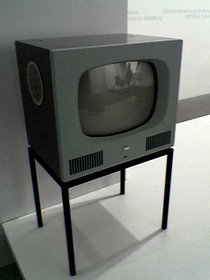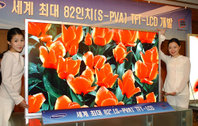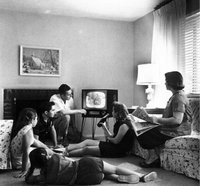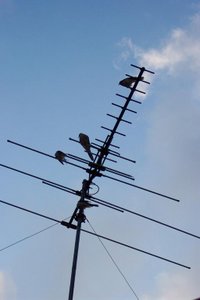Televisions
Television is a telecommunication system for broadcasting and receiving moving pictures and sound over a distance. The term has come to refer to all the aspects of television programming and transmission as well. more...
History
The development of television technology can be divided along two lines: those developments that depended upon both mechanical and electronic principles, and those which are purely electronic. From the latter descended all modern televisions, but these would not have been possible without discoveries and insights from the mechanical systems.
The word television is a hybrid word, created from both Greek and Latin. Tele- is Greek for "far", while -vision is from the Latin visio, meaning "vision" or "sight". It is often abbreviated as TV or the telly.
Electromechanical television
The German student Paul Gottlieb Nipkow proposed and patented the first electromechanical television system in 1885. Nipkow's spinning disk design is credited with being the first television image rasterizer. However, it wasn't until 1907 that developments in amplification tube technology made the design practical. Meanwhile, Constantin Perskyi had coined the word television in a paper read to the International Electricity Congress at the International World Fair in Paris on August 25, 1900. Perskeyi's paper reviewed the existing electromechanical technologies, mentioning the work of Nipkow and others.
In 1911, Boris Rosing and his student Vladimir Kosma Zworykin created a television system that used a mechanical mirror-drum scanner to transmit, in Zworykin's words, "very crude images" over wires to the electronic Braun tube (cathode ray tube) in the receiver. Moving images were not possible because, in the scanner, "the sensitivity was not enough and the selenium cell was very laggy." Zworykin later went to work for RCA to build a purely electronic television, the design of which was eventually found to violate patents by Philo Taylor Farnsworth.
On March 25, 1925, Scottish inventor John Logie Baird gave a demonstration of televised silhouette images at Selfridge's Department Store in London. But if television is defined as the transmission of live, moving, half-tone (grayscale) images, and not silhouette or still images, Baird achieved this privately on October 2, 1925, and gave the world's first public demonstration of a working television system to members of the Royal Institution and a newspaper reporter on January 26, 1926 at his laboratory in London. Unlike later electronic systems with several hundred lines of resolution, Baird's vertically scanned image, using a scanning disc embedded with a double spiral of lenses, had only 30 lines, just enough to reproduce a recognizable human face.
In 1928 Baird's company (Baird Television Development Company / Cinema Television) broadcast the first transatlantic television signal, between London and New York, and the first shore to ship transmission. He also demonstrated an electromechanical color, infrared (dubbed "Noctovision"), and stereoscopic television, using additional lenses, disks and filters. In parallel he developed a video disk recording system dubbed "Phonovision"; a number of the Phonovision recordings, dating back to 1927, still exist. In 1929 he became involved in the first experimental electromechanical television service in Germany. In 1931 he made the first live transmission, of the Epsom Derby. In 1932 he demonstrated ultra-short wave television. Baird's electromechanical system reached a peak of 240 lines of resolution on BBC television broadcasts in 1936, before being discontinued in favor of a 405 line all-electronic system.
Read more at Wikipedia.org





